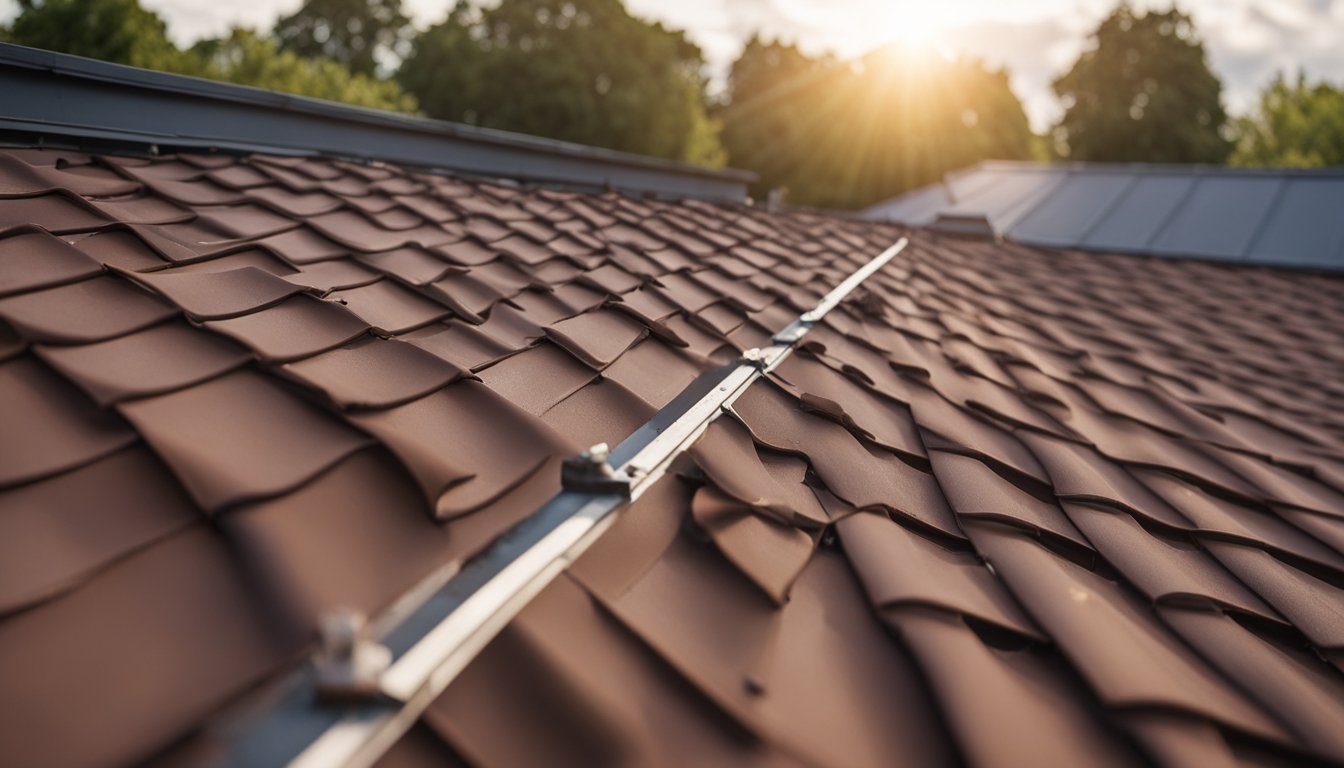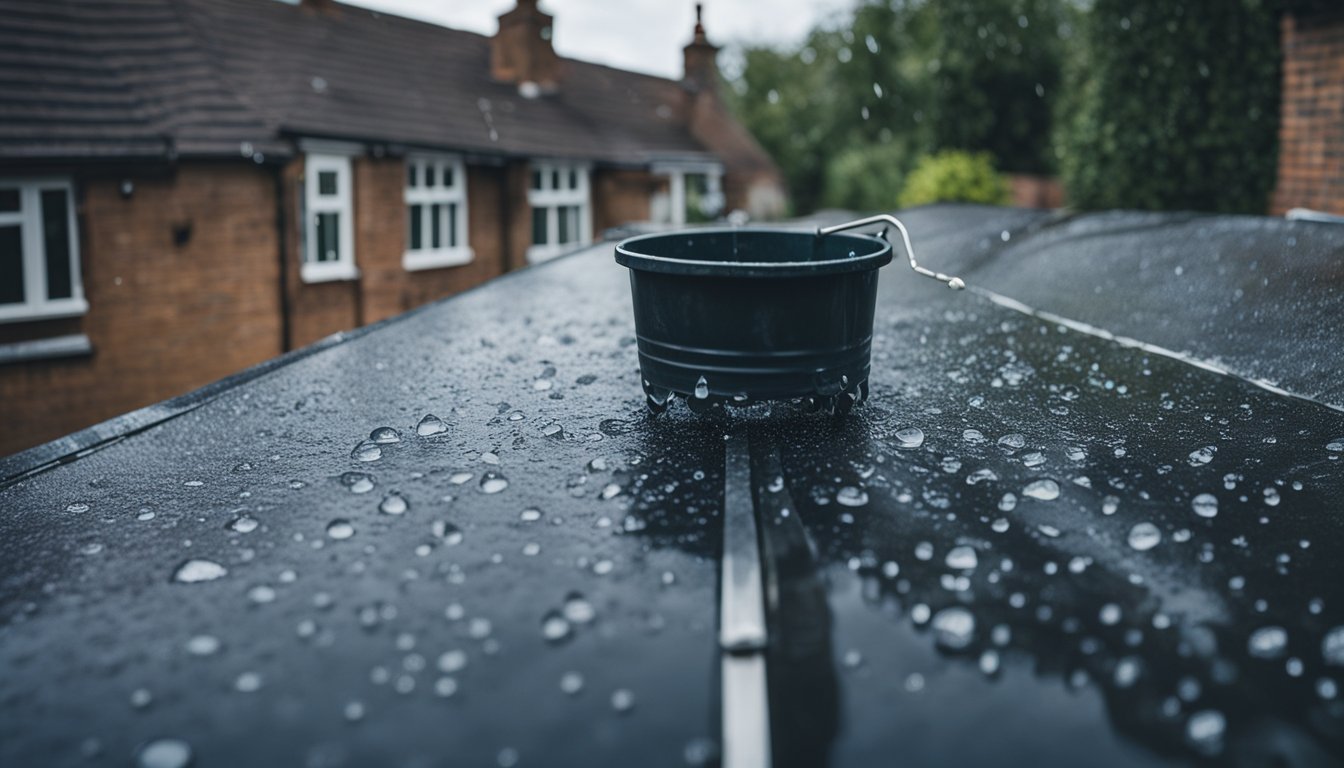Late updated: 08 Jul 2024 09:07
Written by: Oliver Bennett
Emergency Roof Leak Solutions For UK Homes: Quick Fixes and Long-Term Repairs
Emergency Roof Leak Solutions For UK Homes

An unexpected roof leak can disrupt your life and threaten the safety of your home. Addressing a roof leak urgently is essential to preventing extensive damage and maintaining peace of mind. In this blog post, we'll explore effective solutions for dealing with emergency roof leaks in UK homes, ensuring you’re well-prepared to handle any situation.
Finding and assessing the source of a roof leak is the first step toward mitigating the problem. Water stains on ceilings, damp walls, or visible drips are immediate indicators that your roof may be compromised. Identifying the extent of the damage early helps in determining the most appropriate repair methods, whether it requires professional intervention or a DIY approach.
Repairing a roof leak can range from simple patching of minor tears to complex restoration for extensive damage. Quick fixes, such as applying roof patch tar or caulking, can provide temporary relief, but for long-term security, professional services are advisable. For comprehensive and enduring solutions, employing experienced roofers will enhance the durability of your roof and safeguard your home against future leaks.
Key Takeaways
- Identifying roof leaks promptly ensures effective damage control.
- Quick fixes are useful, but professional roof repairs offer long-term peace of mind.
- Preparedness is key to maintaining the safety and integrity of your home.
Identifying and Assessing Roof Leaks
In this section, we will explore how to identify signs of a roof leak, take immediate actions to minimise damage, and the process of conducting professional inspections and documentation.
Signs of a Roof Leak
Identifying a roof leak can be challenging, but certain indicators can help us pinpoint the problem. Water stains on ceilings or walls are common signs. These stains might appear as yellowish-brown discolourations.
In the attic, we should look for damp patches on insulation or rafters. Mould growth and musty smells signal water ingress. Checking roof penetrations such as chimneys, vents, and skylights is crucial since leaks often originate at these points.
Additionally, if daylight is visible through the roof, it suggests gaps or holes. Observing the roof from inside these areas can help identify potential leaks.
Immediate Actions to Minimise Damage
When a leak is identified, immediate action is necessary to prevent further damage. First, we should contain the leak by placing a bucket under the dripping water. Using towels to soak up excess water can also help prevent water from spreading further.
Applying a tarp over the affected area is a temporary fix that prevents more water from entering. If the situation is severe, contacting an emergency roofer is advisable.
It's important to have basic tools like a tarp, bucket, and towels readily available to manage emergencies. Quick action can significantly reduce the damage and repair costs.
Professional Inspections and Documentation
Professional inspections provide a detailed assessment of the situation. Using advanced tools like infrared imaging, experts can detect hidden moisture. This technology helps identify leaks not visible to the naked eye.
Documenting the damage is essential, particularly for insurance claims. Taking clear photos of affected areas, including close-ups of water stains and visible damage, is critical. Keeping records of professional assessments, including invoices and reports, provides valuable evidence.
Professional expertise ensures accurate identification of the source and extent of the leak. This knowledge is crucial for effective repairs and preventing future issues. Proper documentation and inspections can streamline the insurance claim process and ensure thorough repairs are made.
Repair Solutions and Preventative Measures

Addressing issues with roof leaks involves both immediate repairs and long-term preventative measures. Partnering with experienced professionals ensures peace of mind and longevity for your roofing system.
Immediate Repairs by Emergency Roofers
When faced with a leaking roof, contacting an emergency roofing contractor can prevent significant damage. Experienced roofers quickly identify leak sources and perform temporary fixes to mitigate water intrusion.
Using overlapping tarps or plastic sheets diverts water until permanent solutions are in place. Emergency roofers also deploy temporary sealants to patch leaks, reducing damage to building interiors.
Long-Term Repair and Maintenance Strategies
Regular roof maintenance is essential to prevent future leaks. Scheduling annual or bi-annual inspections with professional roofing contractors can identify weak spots and necessary repairs before they escalate.
Maintenance includes cleaning gutters, fascias, and soffits, and ensuring that flat roofing areas have no pooling water. Replacing worn roof tiles and addressing small issues promptly extends the roof's lifespan and maintains a watertight seal.
Materials and Workmanship for Durability
Deploying high-quality materials and skilled workmanship ensures lasting repairs and roof replacement. Opting for durable materials such as quality roof tiles and reliable sealants enhances the structure's resilience.
Working with professionals ensures that installation and repairs meet high standards, giving peace of mind about the longevity and durability of the roof. Choosing the best available materials and expert contractors contributes to a robust and leak-free roofing system.
Frequently Asked Questions

In the event of an emergency roof leak, it's crucial to understand temporary and permanent solutions, effective products, and available services. Here, we address common questions to help homeowners manage these issues efficiently.
How can I temporarily stop a roof leak until professional help arrives?
To temporarily halt a roof leak, you can use materials like roofing cement or sealant. Apply these to the affected area to create a short-term barrier against water. Additionally, utilising adhesive patches can provide a quick fix for minor leaks.
What permanent solutions are available for fixing a leaking roof in UK homes?
Professionally addressing leaks involves repairing or replacing damaged tiles or shingles, and potentially installing a new waterproof membrane. Long-lasting solutions often include high-quality materials and expert labour to ensure comprehensive repair and prevention of future leaks.
What are the best products to use for emergency flat roof repairs?
For emergency flat roof repairs, we recommend using products such as PermaRoof's emergency repair kits. These kits typically include easy-to-apply sealants and adhesives designed to provide a durable, temporary seal until more permanent repairs can be made.
Where can I find 24-hour emergency roof repair services in the UK?
24-hour emergency roof repair services can usually be found through local roofing companies or specialised emergency repair services. Many companies advertise their availability online and offer rapid response to help mitigate damage quickly.
Are there any reliable DIY fixes for a leaking roof in a UK home?
Yes, reliable DIY fixes include using roofing tape, temporary tarps, and sealants. These items can help manage leaks until professional services are available. Always ensure that the affected area is cleaned and dried before applying any DIY products for best results.
How should one address a leaking roof during inclement weather in the UK?
During heavy rain or storms, using tarps to cover the affected area is the safest solution. Make sure to secure the tarp tightly to prevent further water intrusion. Avoid attempting repairs in dangerous weather conditions; prioritise safety and seek professional help as soon as possible.
